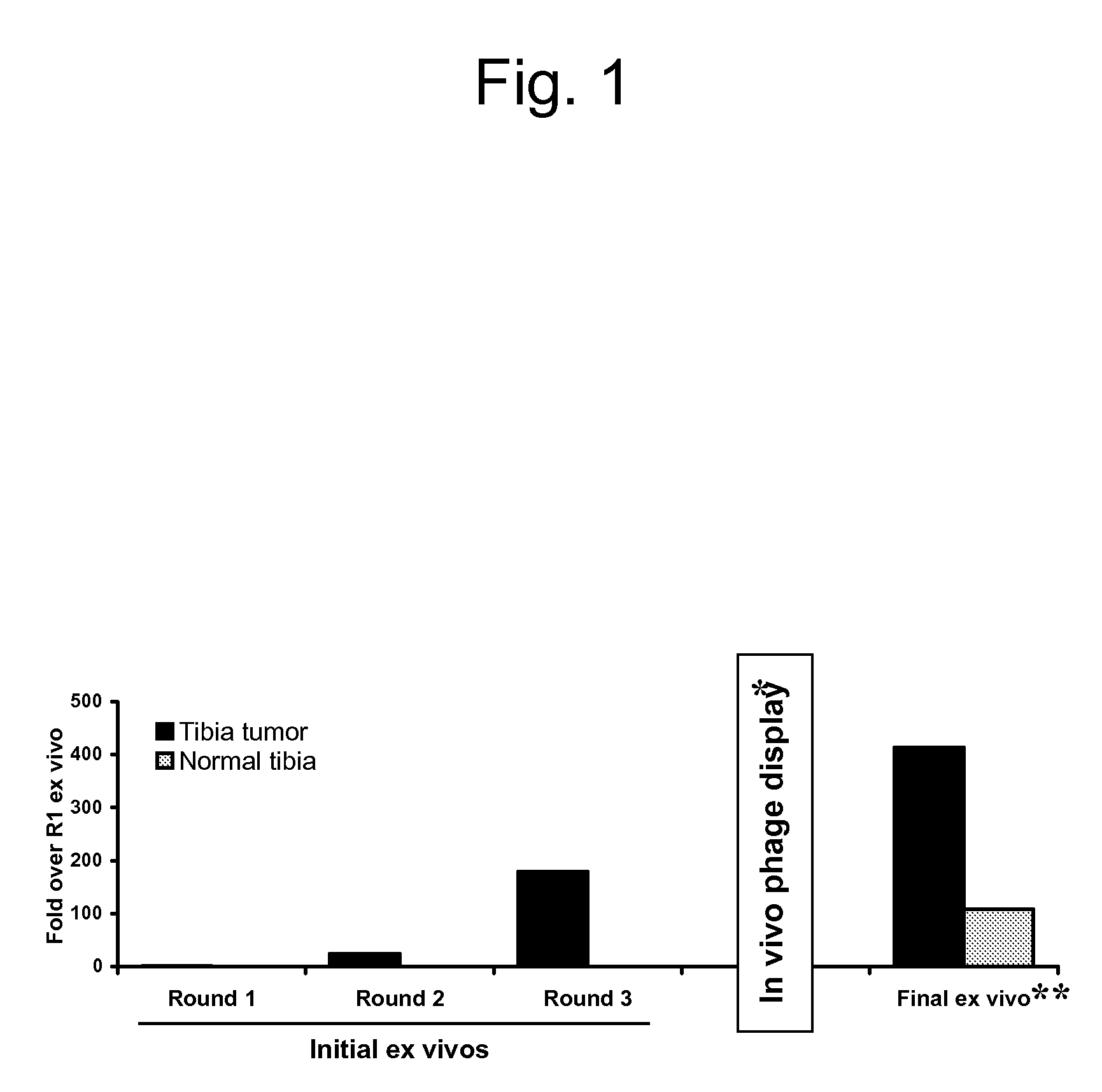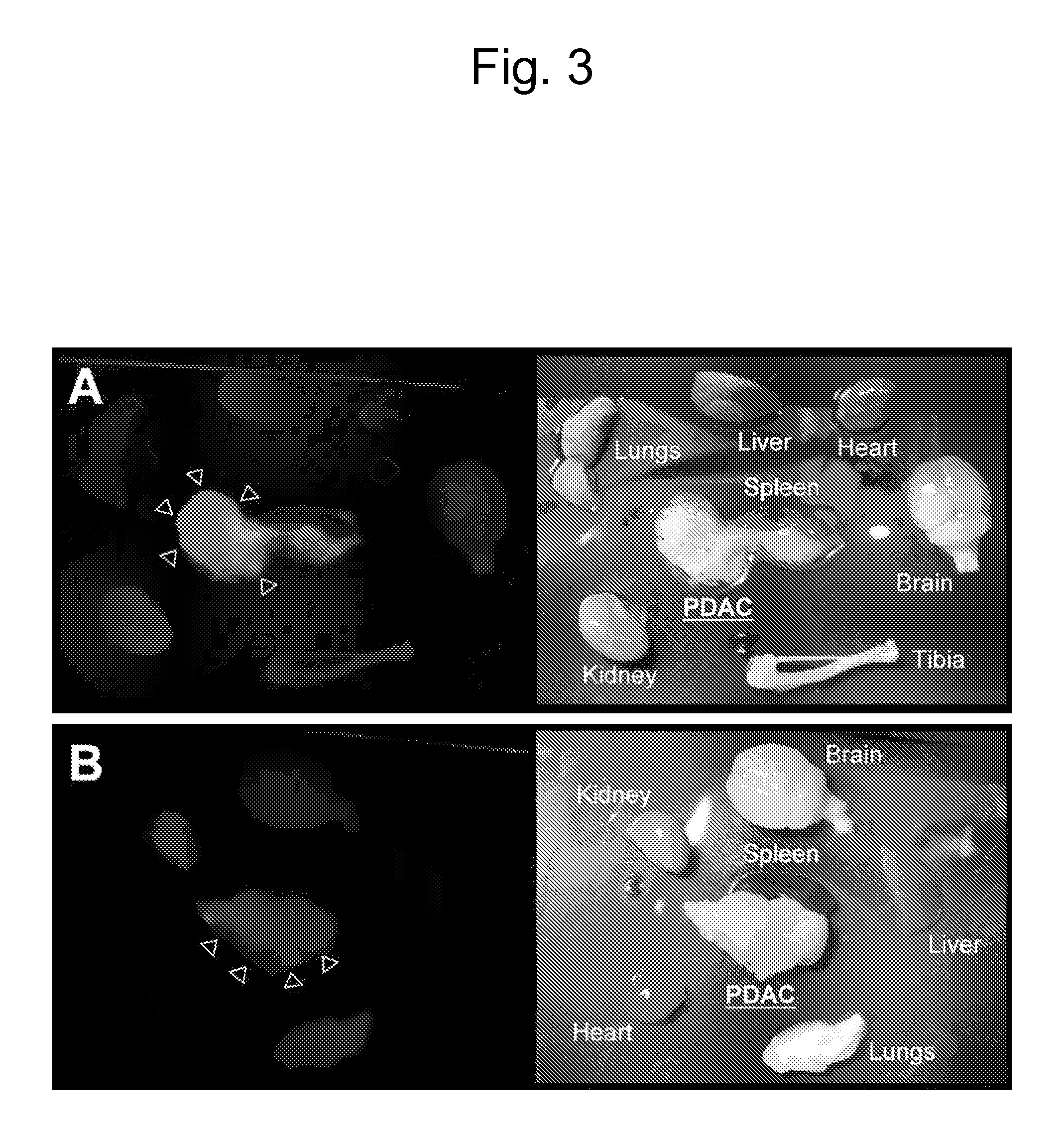Methods and compositions related to internalizing rgd peptides
a technology of peptides and peptides, applied in the field of molecular medicine, oncology, vascular biology, can solve the problems of reducing the efficiency of rgd peptides, and reducing the number of rgd peptides, so as to improve the speed of wound healing, promote wound healing, and reduce inflammation
- Summary
- Abstract
- Description
- Claims
- Application Information
AI Technical Summary
Benefits of technology
Problems solved by technology
Method used
Image
Examples
example 1
1. Example 1
Molecular Changes in the Vasculature of Injured Tissues
[0119]i. Identification of Homing Peptides by Phage Display
[0120]To identify candidate peptides that home to the vasculature in tumors, a peptide library in T7 phage was screened. An example of the enrichment of the library observed during the screenings is shown in FIG. 1. Ex vivo screening was performed by incubating the T7 phage library (diversity approximately 109) with cell suspensions made out of bone xenografts of various human prostate cancer cells, and the phage that bound to the cells were recovered for titration, and amplified for further rounds. The ex vivo rounds were repeated three times before moving into an in vivo phage display. Ex vivo and in vivo phage selections were performed as described in Hoffman et al., “In vivo and ex vivo selections using phage-displayed libraries,” in Clarkson and Lowman (Eds.) Phage Display: A Practical Approach Oxford, U.K.: Oxford University Press (2004)).
[0121]In the i...
example 2
B. Example 2
Analysis of iRGD Homing and Internalization
[0130]Peptides containing the RGD integrin recognition motif (Pierschbacher and Ruoslahti, E. Cell attachment activity of fibronectin can be duplicated by small synthetic fragments of the molecule. Nature 309, 30-33 (1984); Ruoslahti, The RGD story: a personal account. Matrix Biol. 22, 459-465 (2003)) and its mimics have been used to deliver drugs, biologicals, imaging agents, and nanoparticles to αv-integrins expressed in tumor blood vessels (Eliceiri and Cheresh, Adhesion events in angiogenesis. Curr. Opin. Cell Biol. 13, 563-568 (2001); Ruoslahti, Specialization of tumor vasculature. Nature Rev. Cancer 2, 83-90 (2002); Arap et al., Cancer treatment by targeted drug delivery to tumor vasculature in a mouse model. Science 279, 377-380 (1998); Curnis et al., Coupling tumor necrosis factor-α with αv integrin ligands improves its antineoplastic activity. Cancer Res. 64, 565-571 (2004); Sipkins et al., Detection of tumor angiogenes...
PUM
| Property | Measurement | Unit |
|---|---|---|
| circulation time | aaaaa | aaaaa |
| circulation time | aaaaa | aaaaa |
| circulation time | aaaaa | aaaaa |
Abstract
Description
Claims
Application Information
 Login to View More
Login to View More - R&D
- Intellectual Property
- Life Sciences
- Materials
- Tech Scout
- Unparalleled Data Quality
- Higher Quality Content
- 60% Fewer Hallucinations
Browse by: Latest US Patents, China's latest patents, Technical Efficacy Thesaurus, Application Domain, Technology Topic, Popular Technical Reports.
© 2025 PatSnap. All rights reserved.Legal|Privacy policy|Modern Slavery Act Transparency Statement|Sitemap|About US| Contact US: help@patsnap.com



